
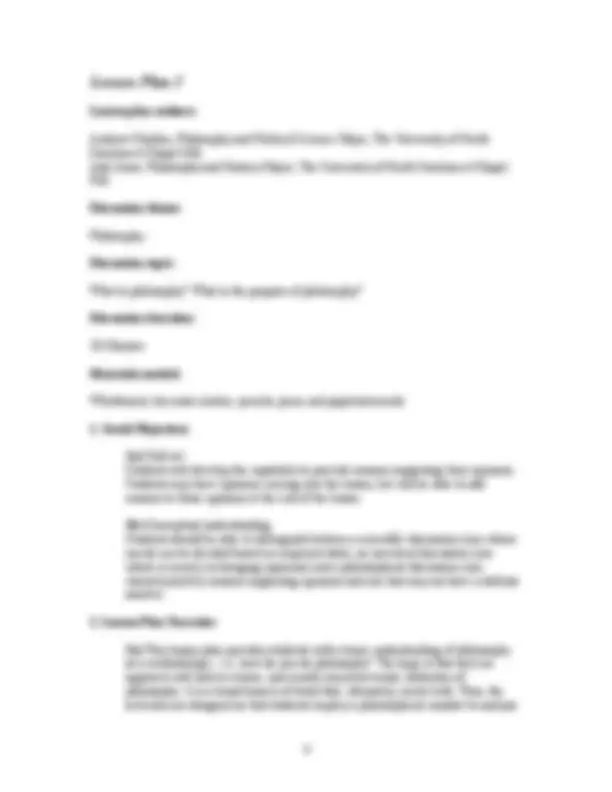
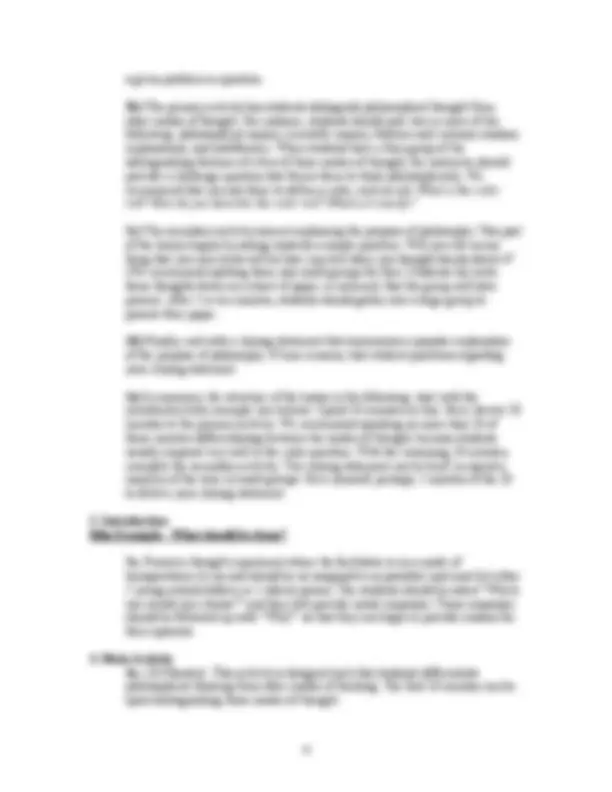
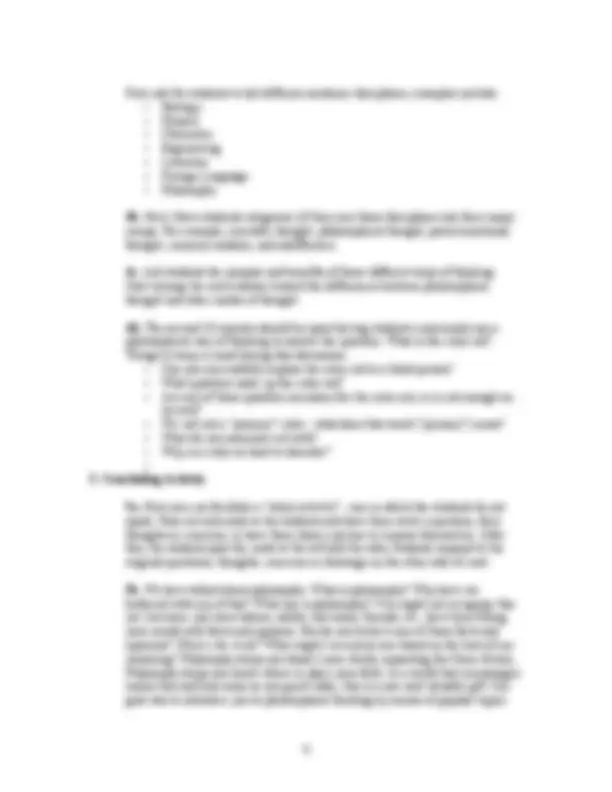
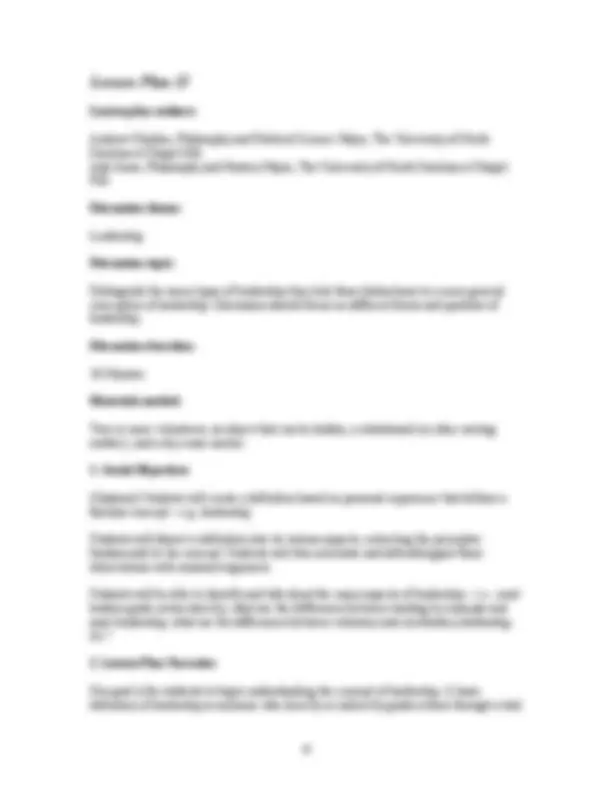
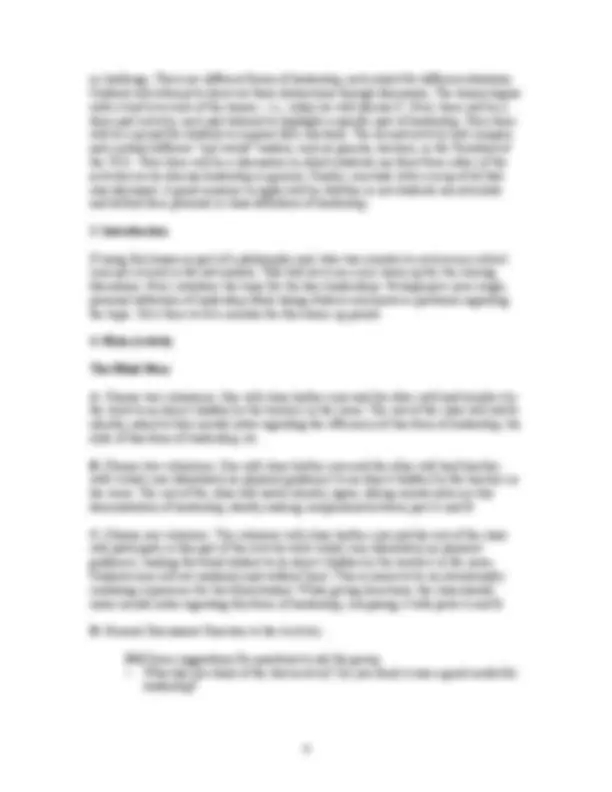
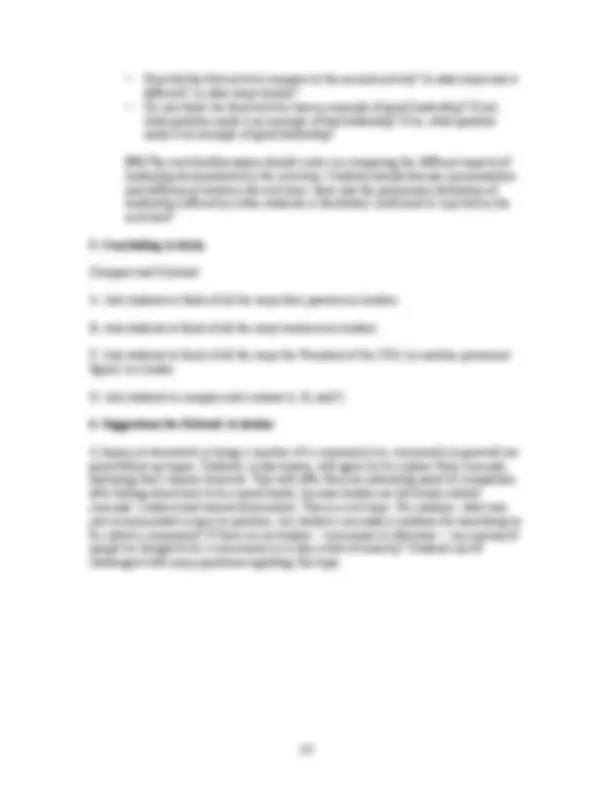
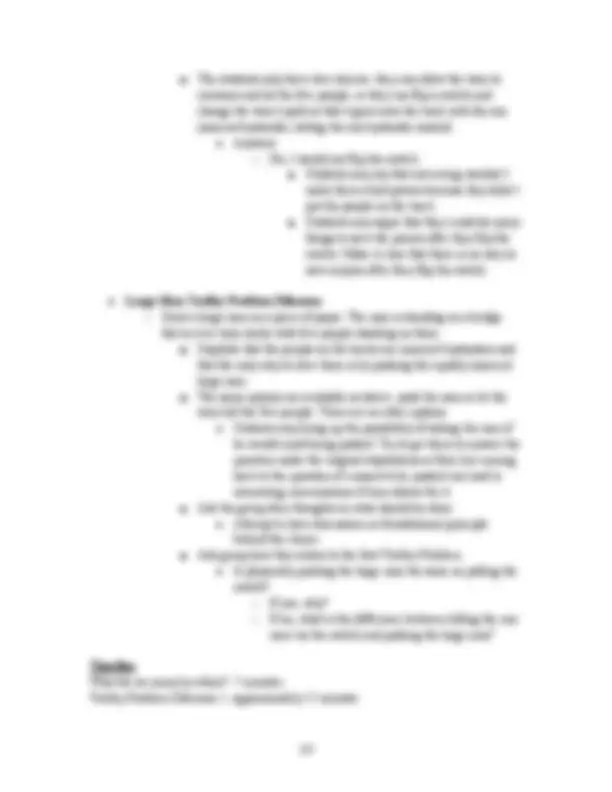
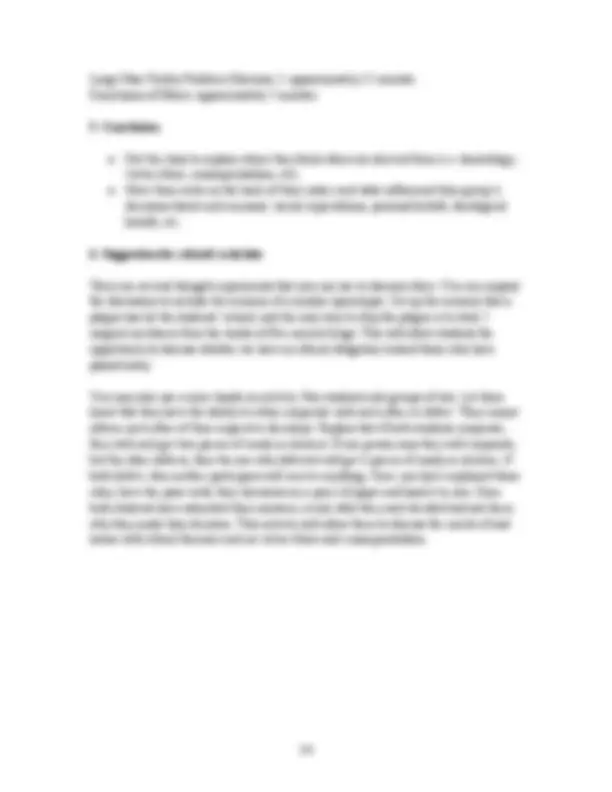
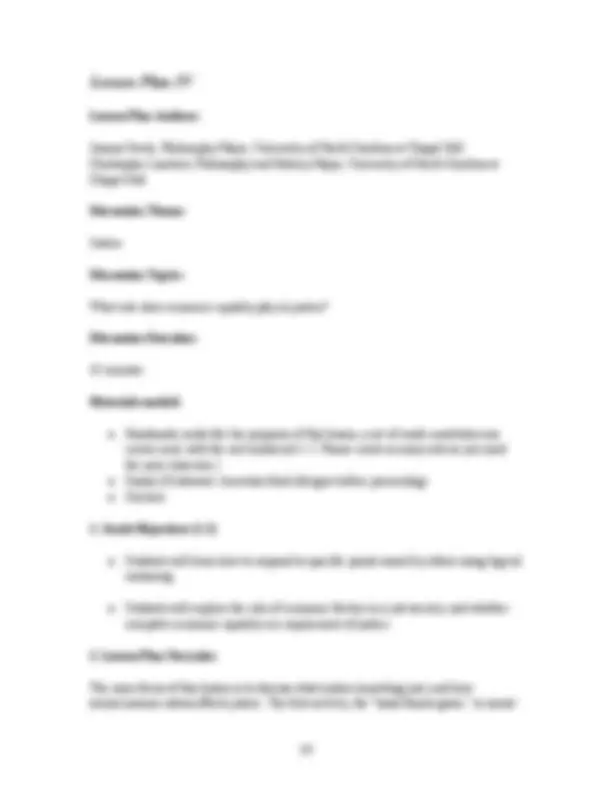
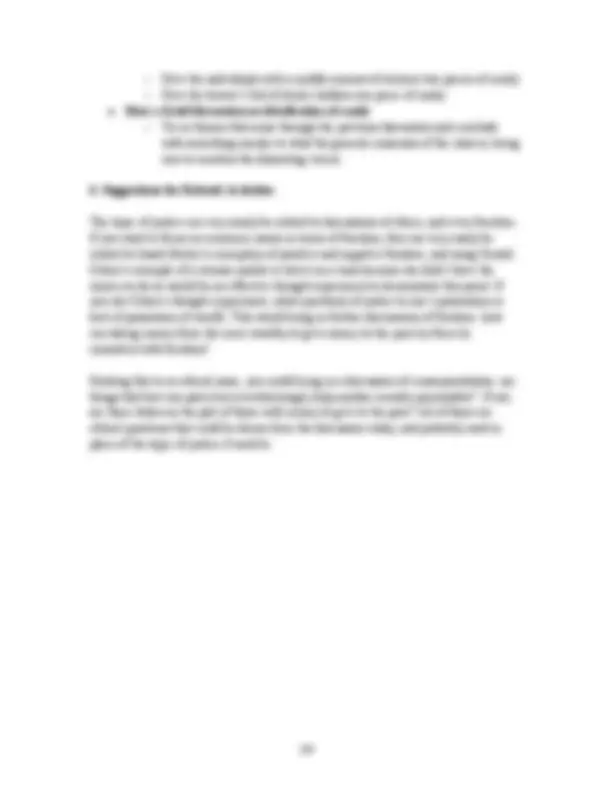
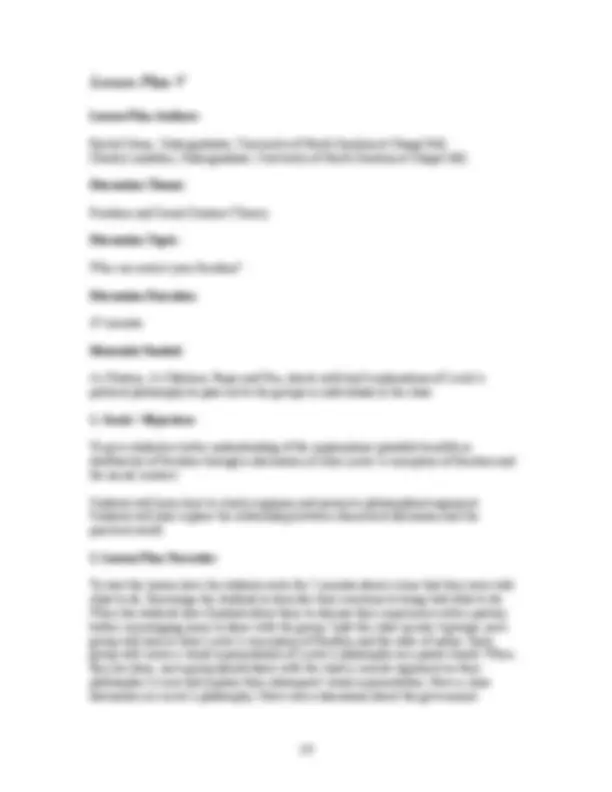
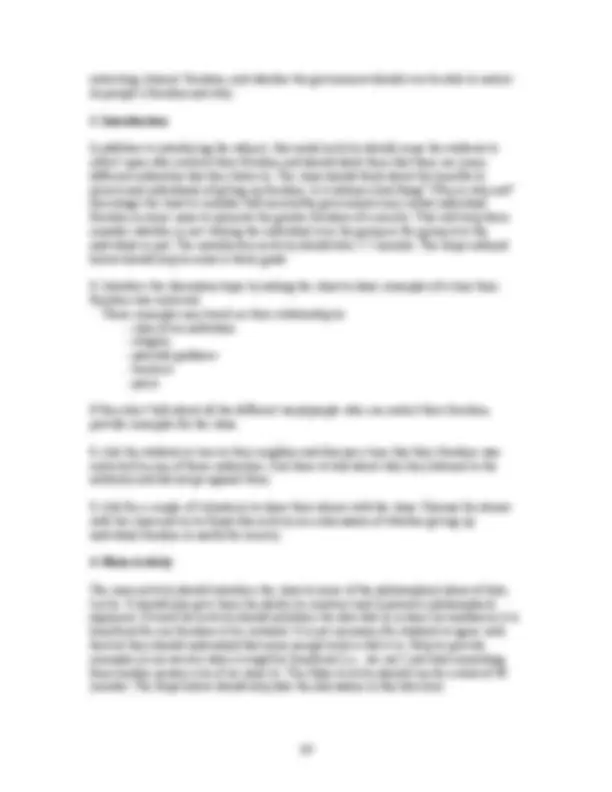
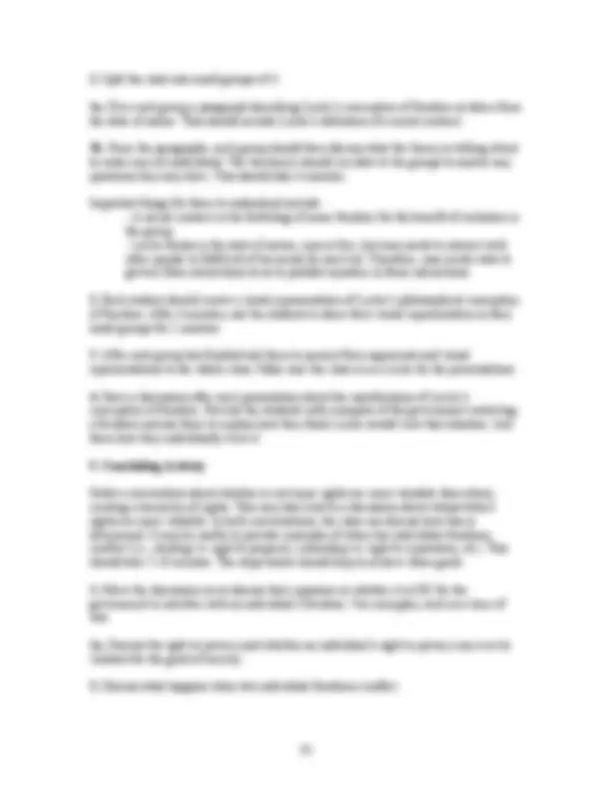
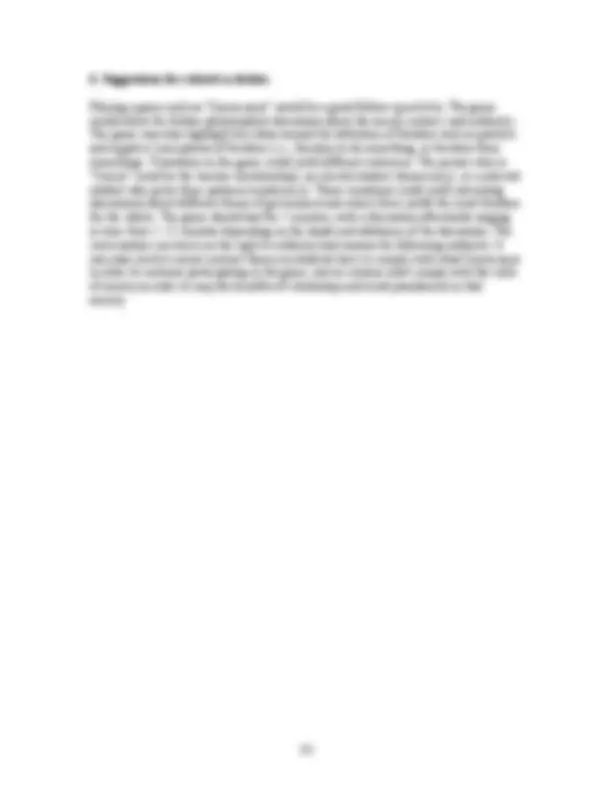
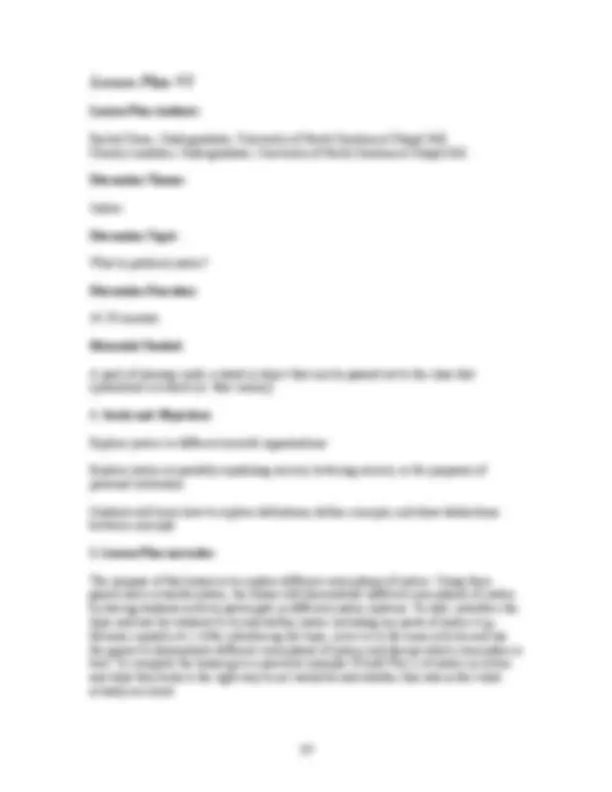
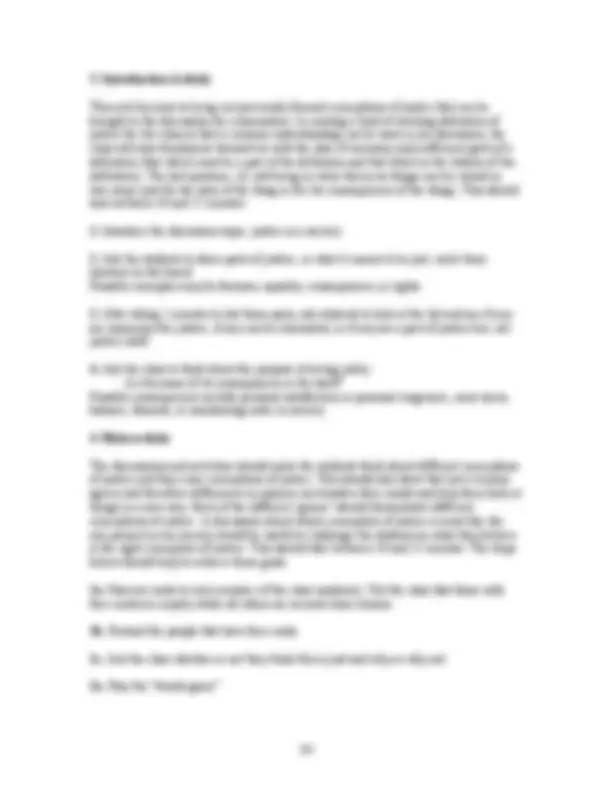
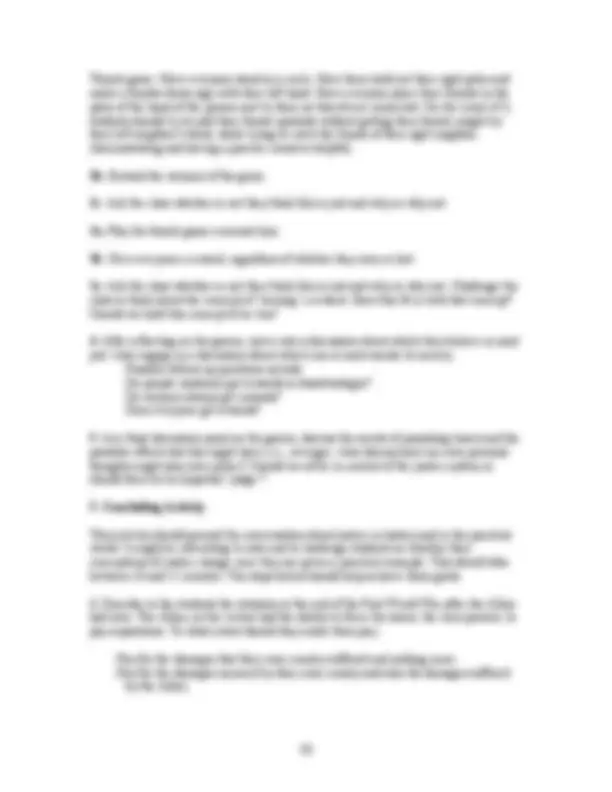
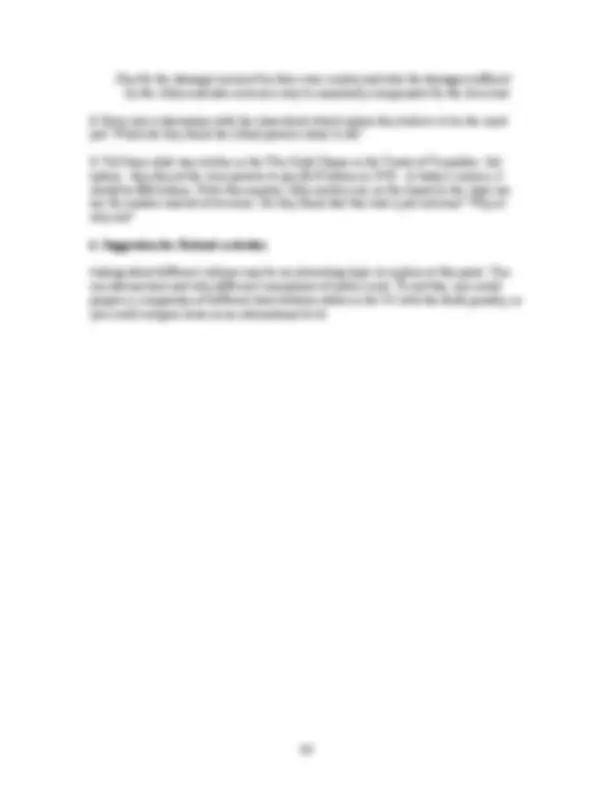
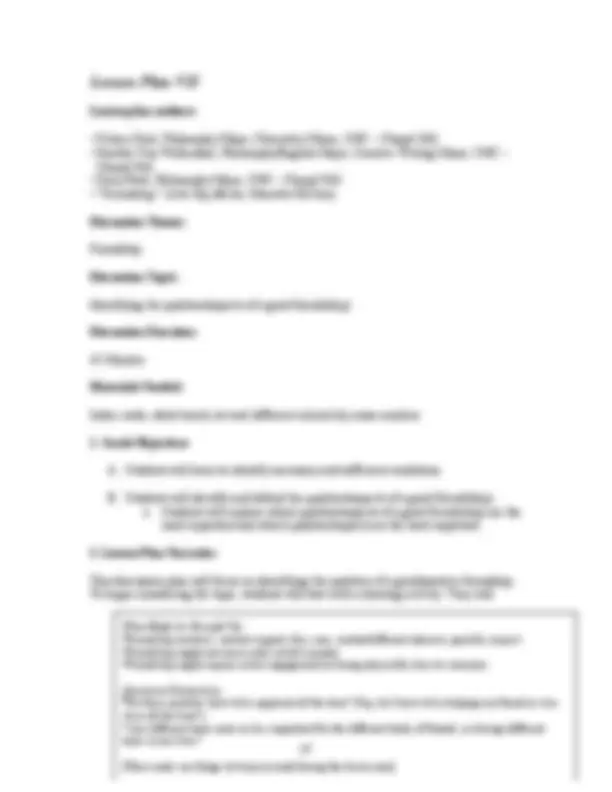
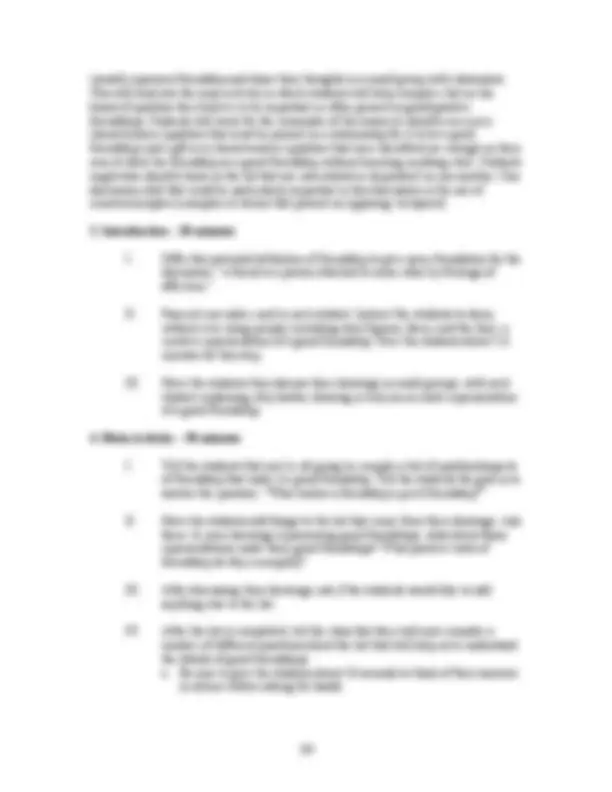
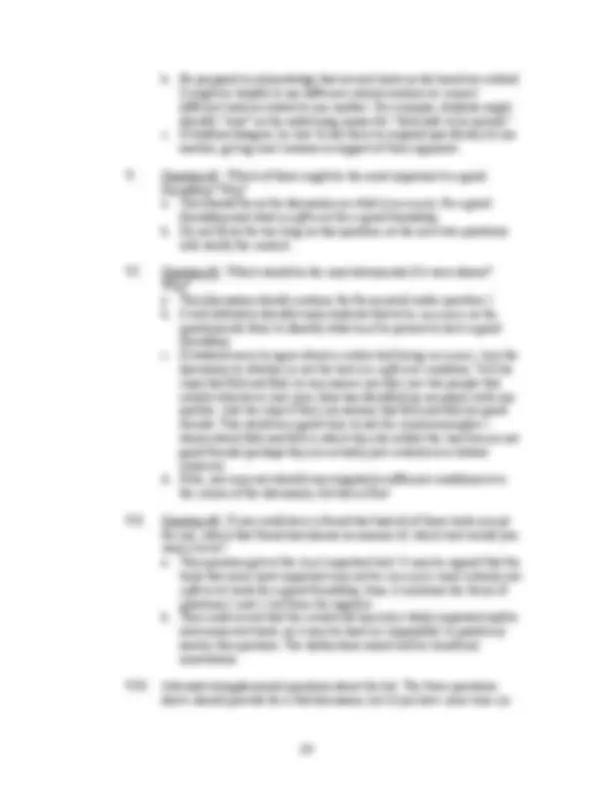
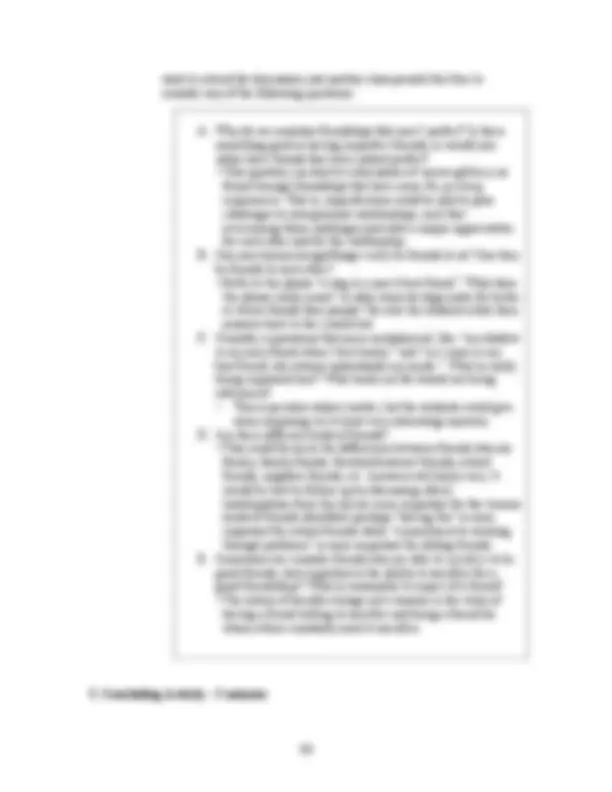
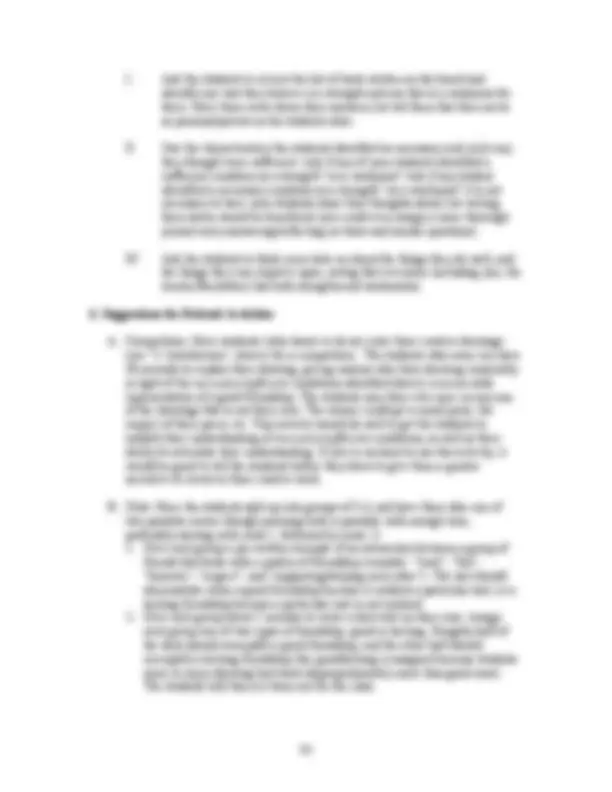

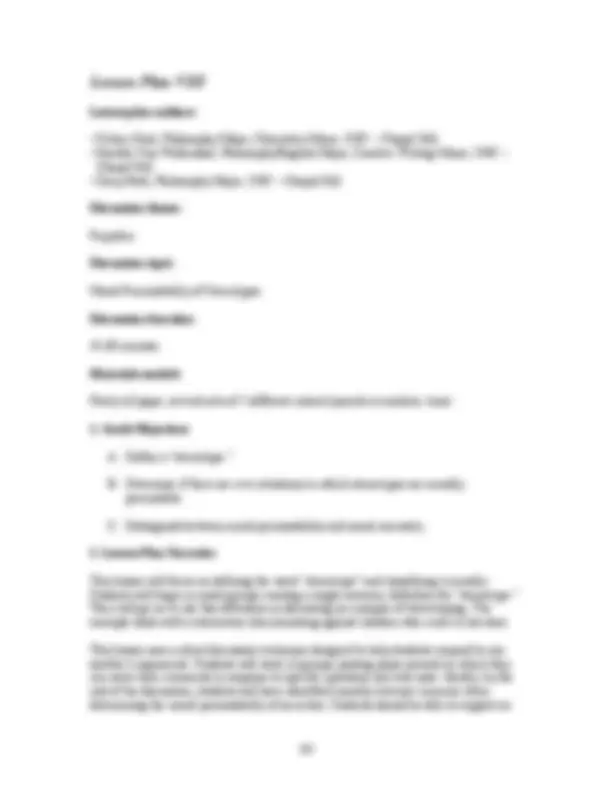
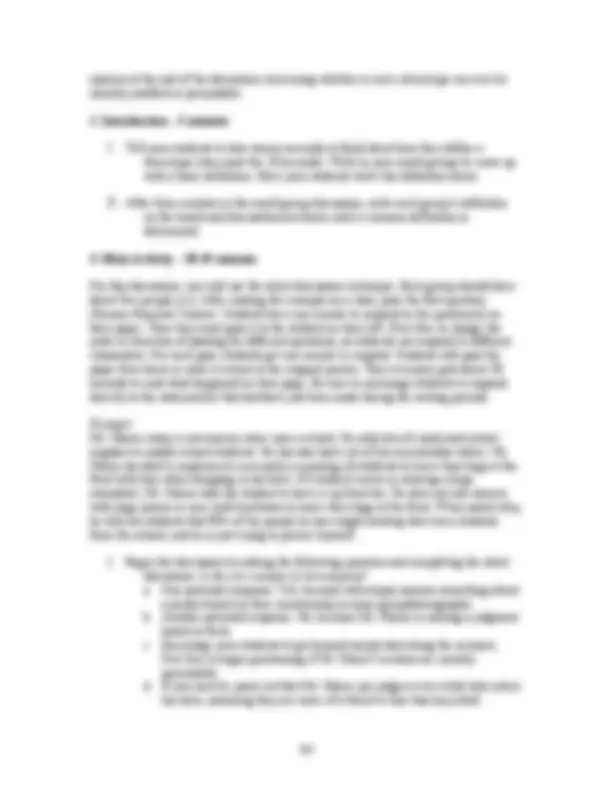
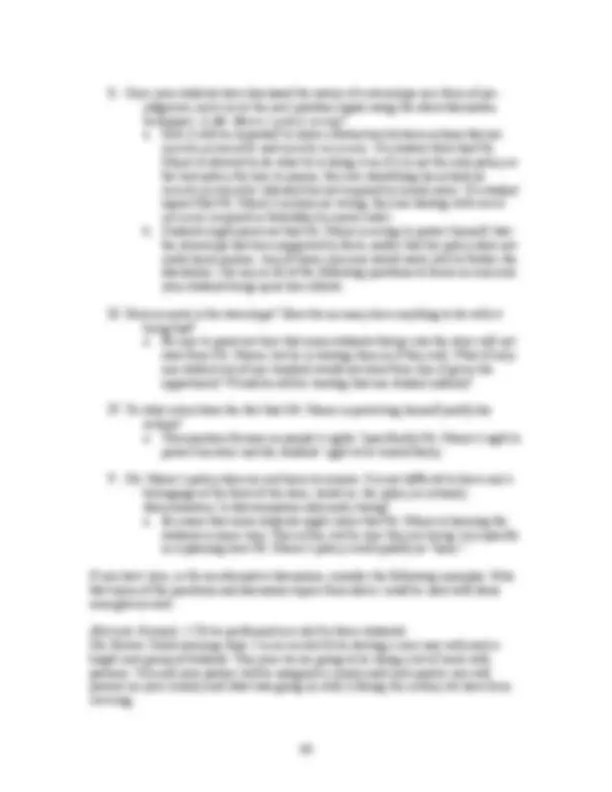
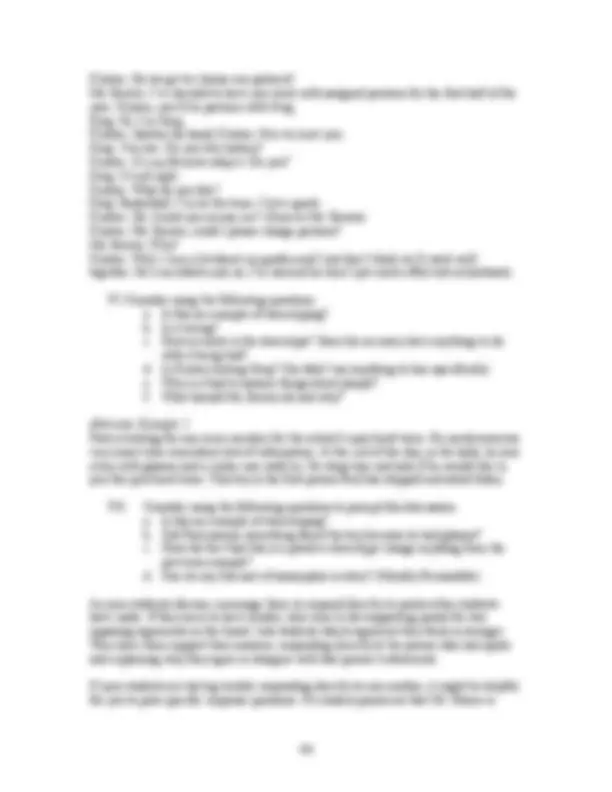
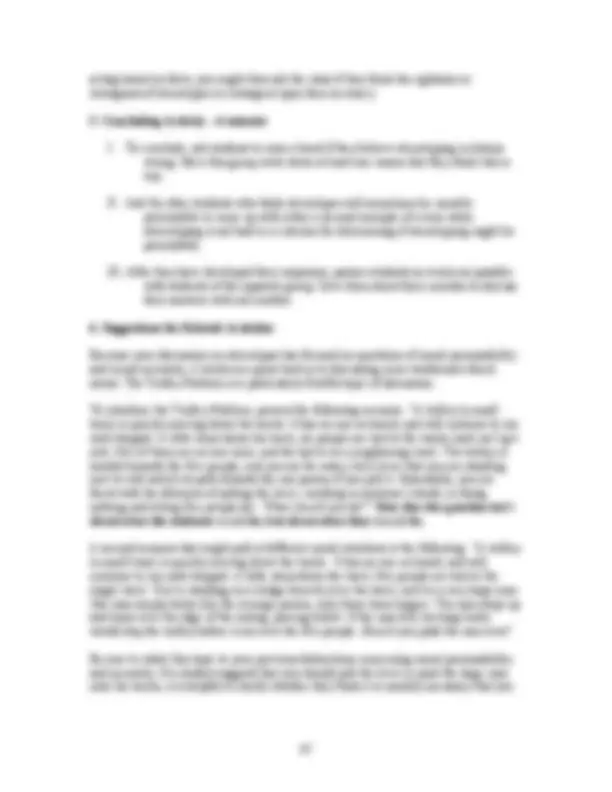

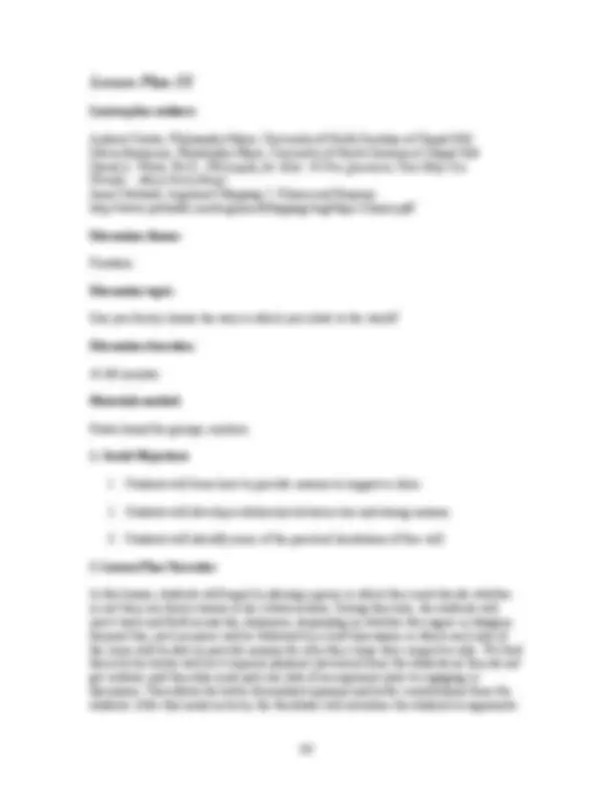
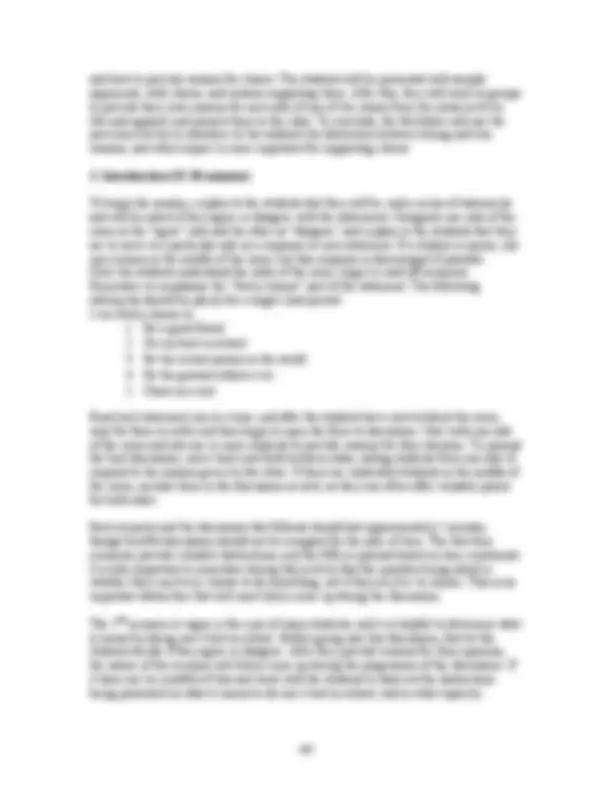
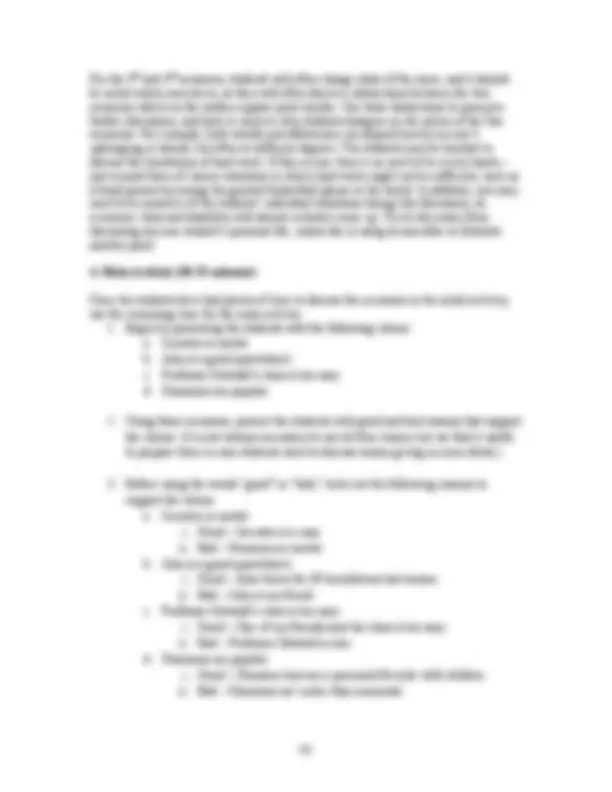
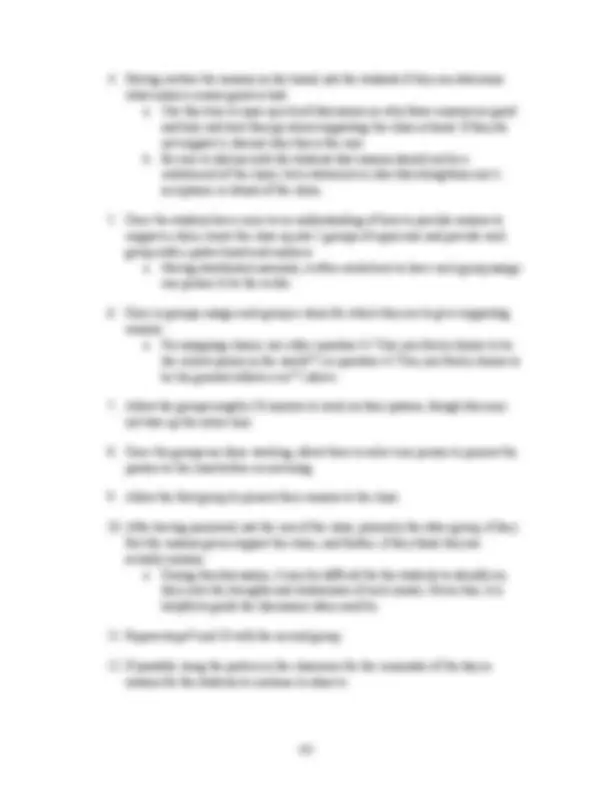
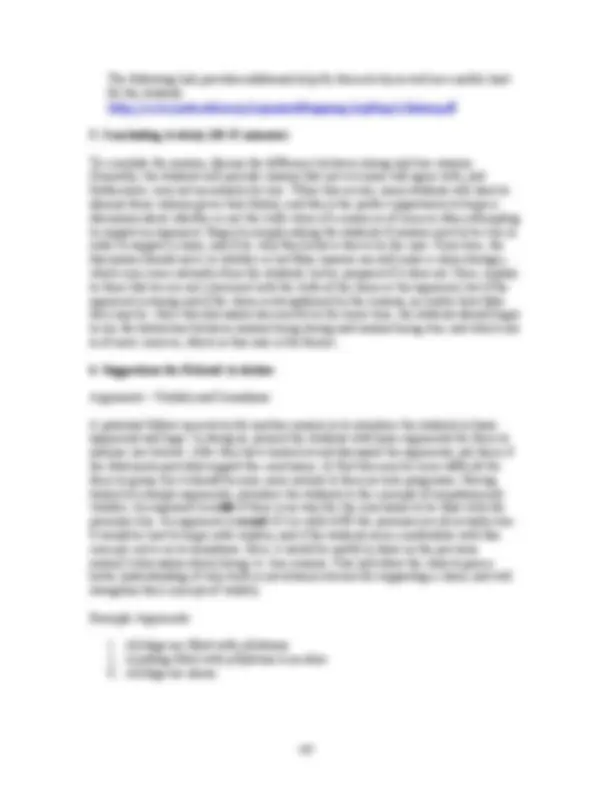
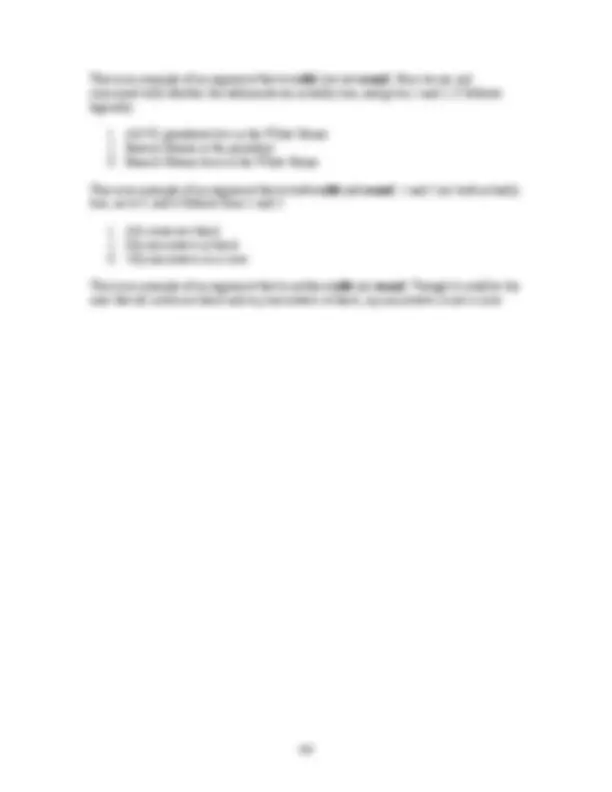
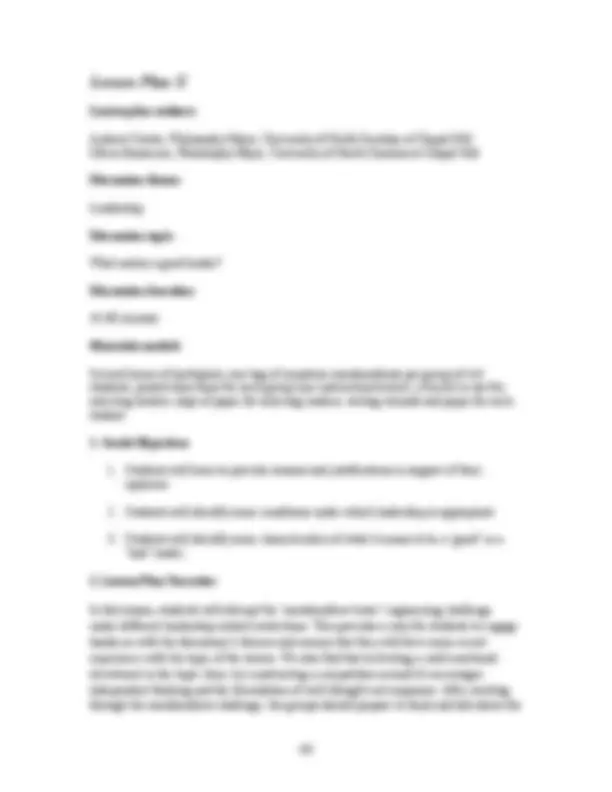
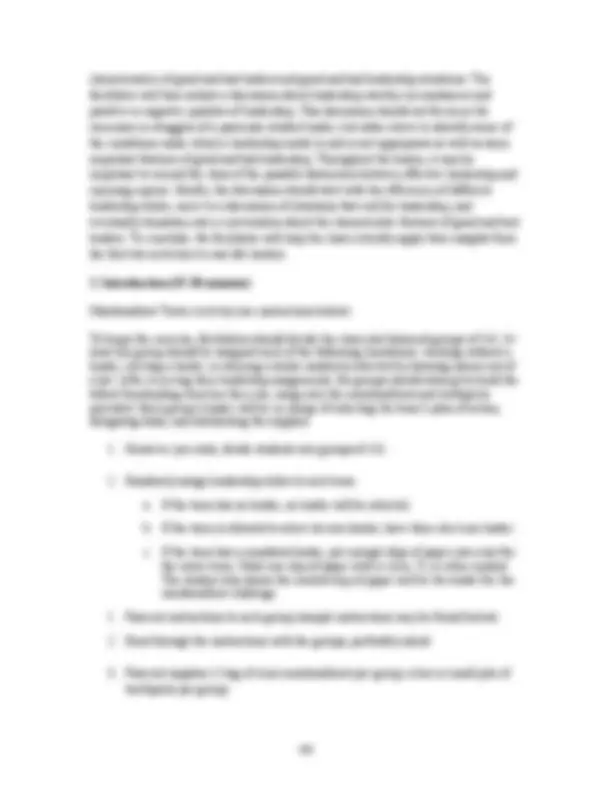
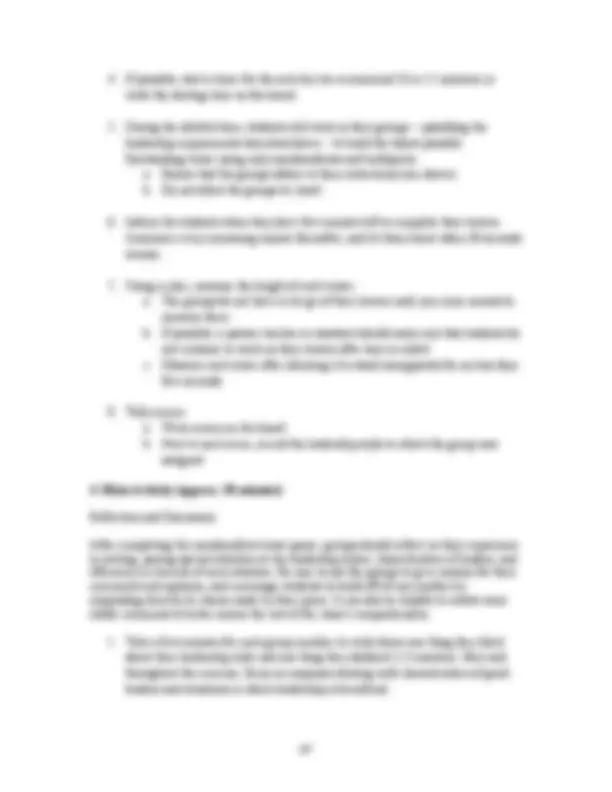
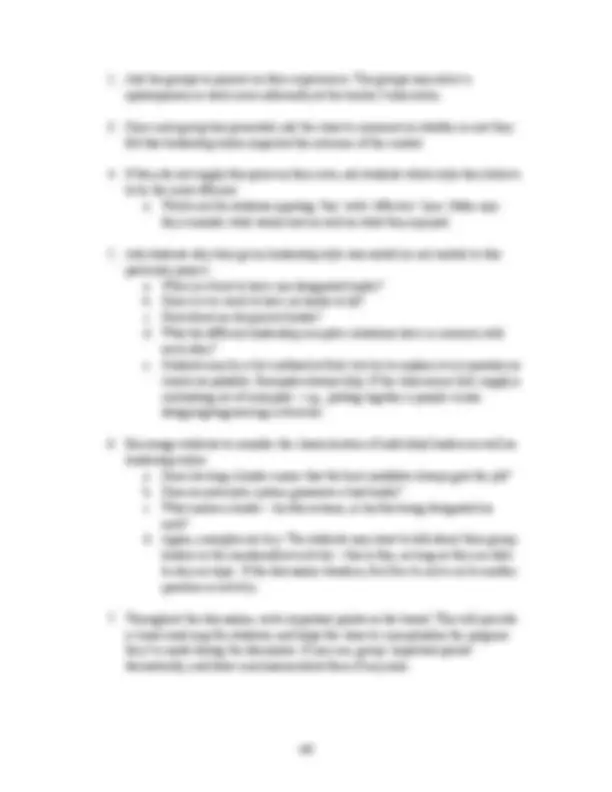
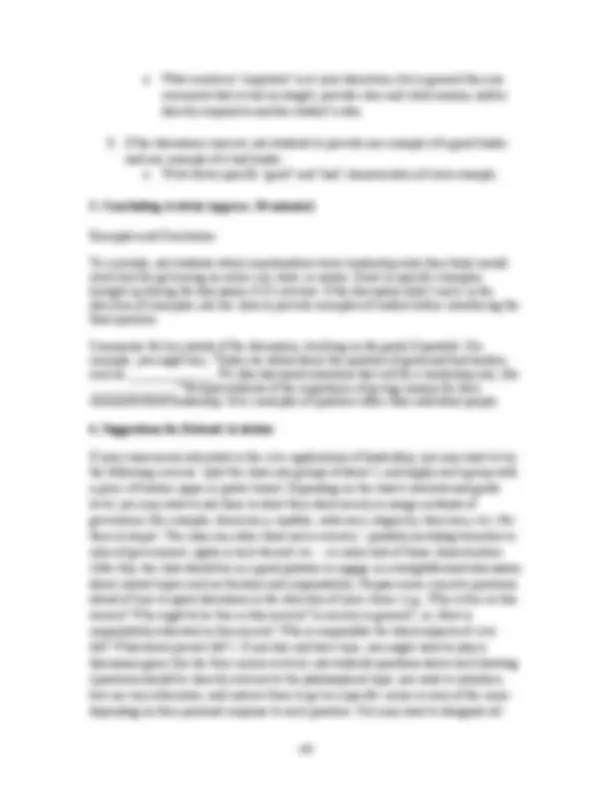
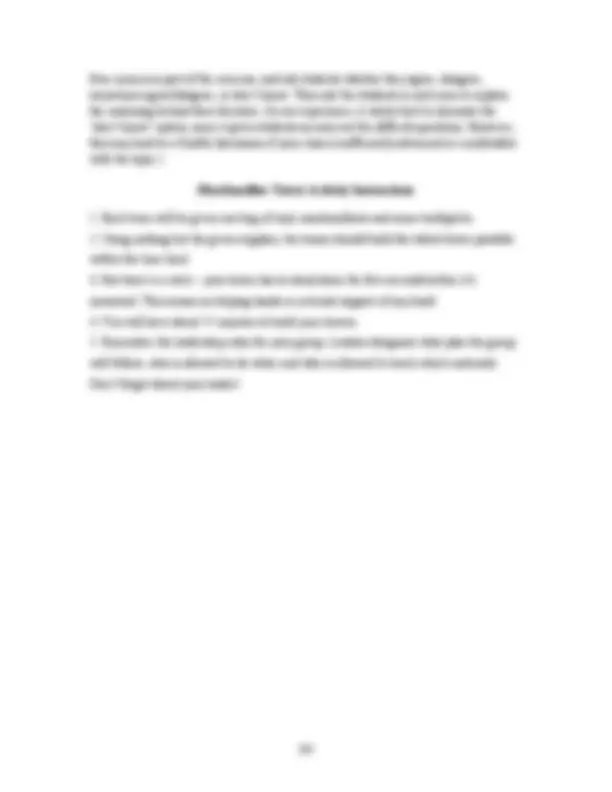
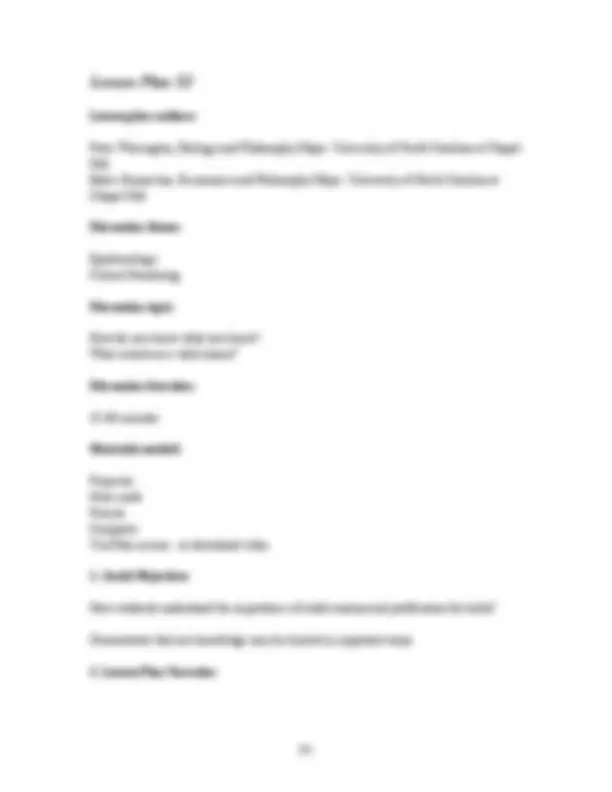
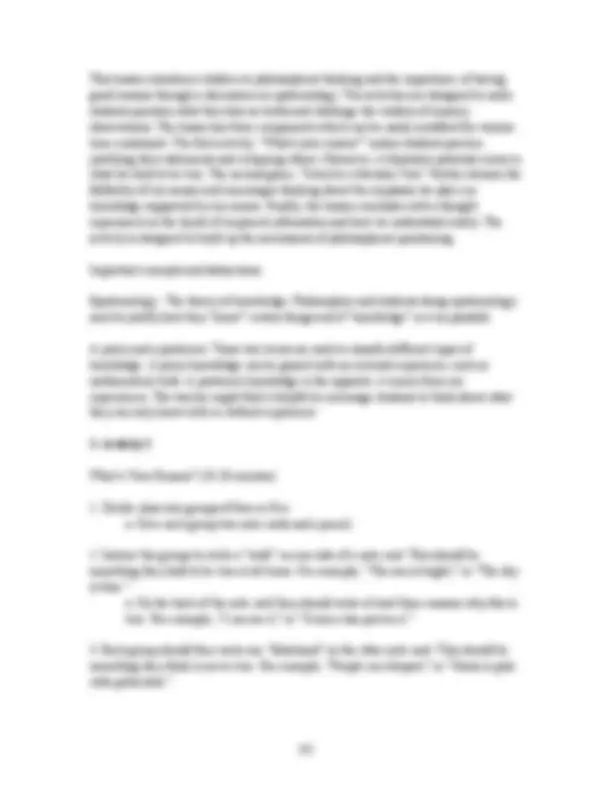
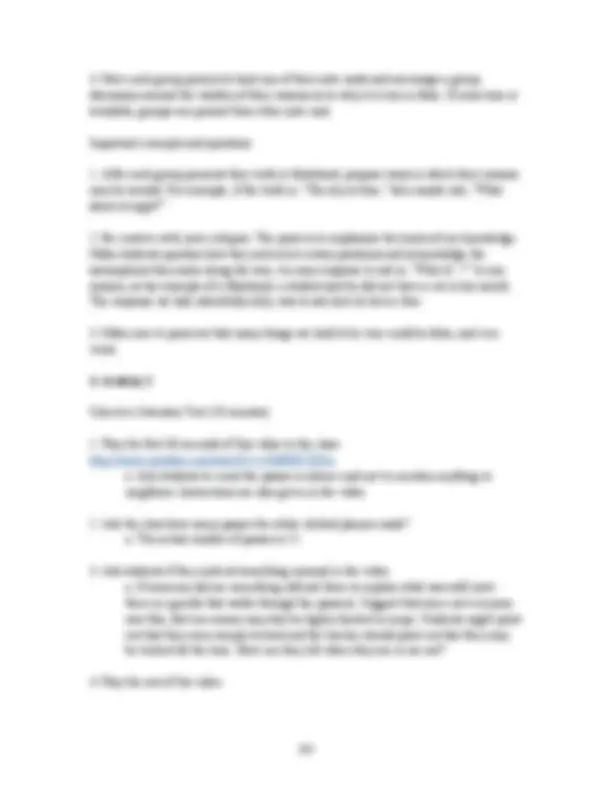
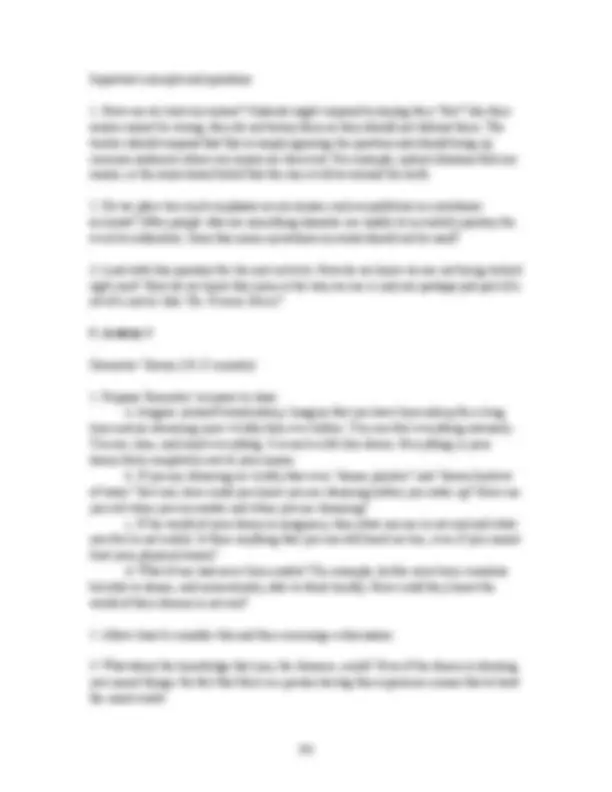
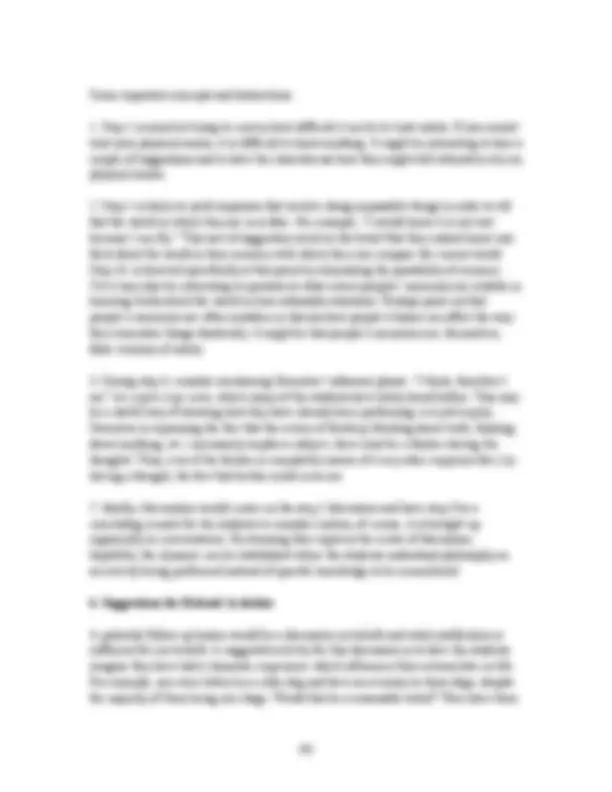

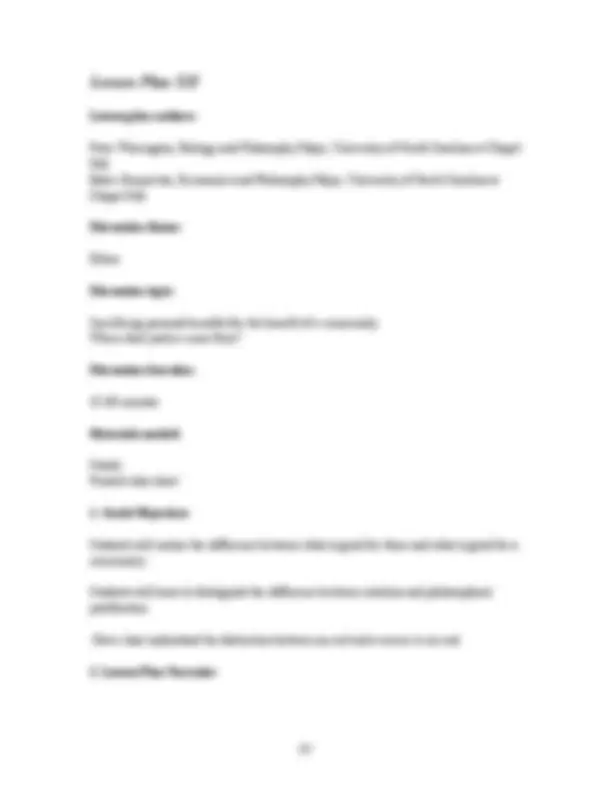
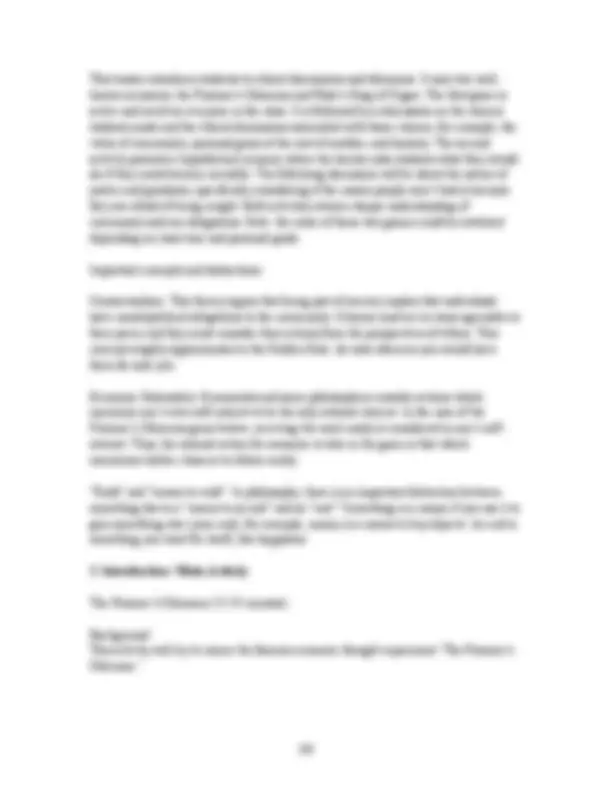
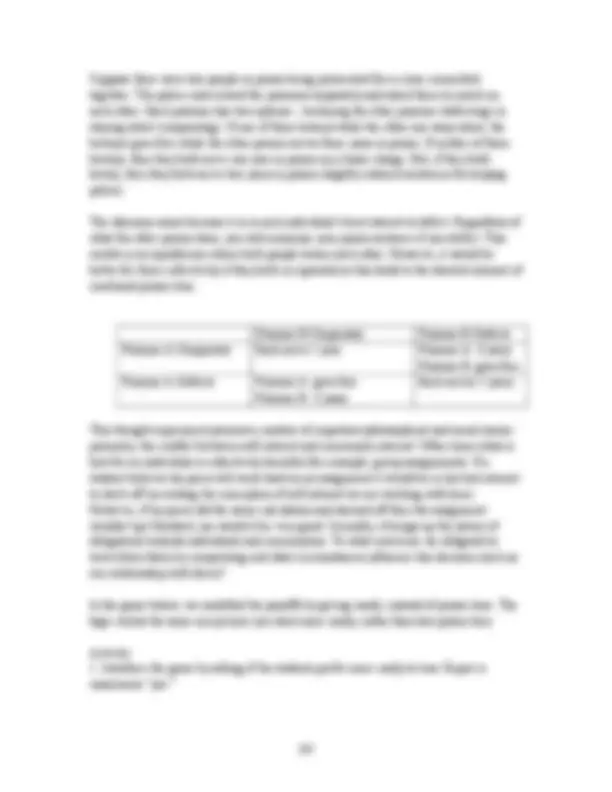
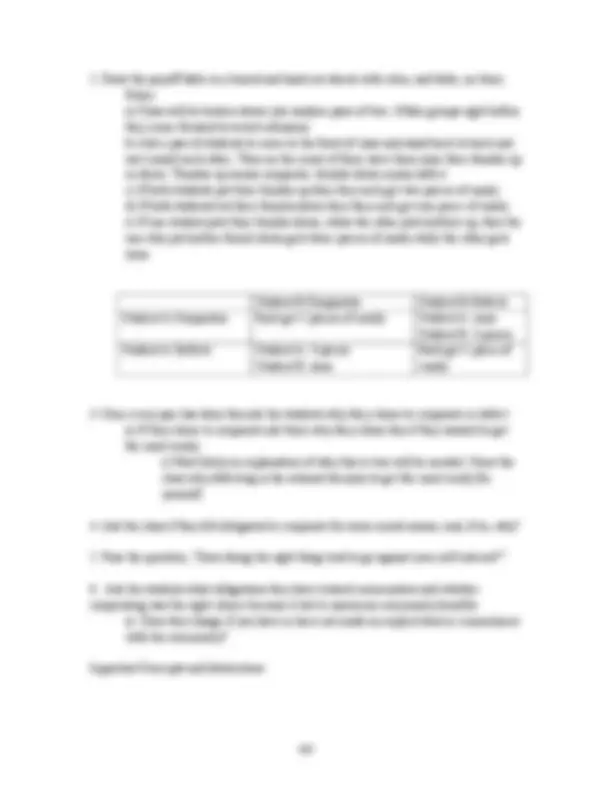
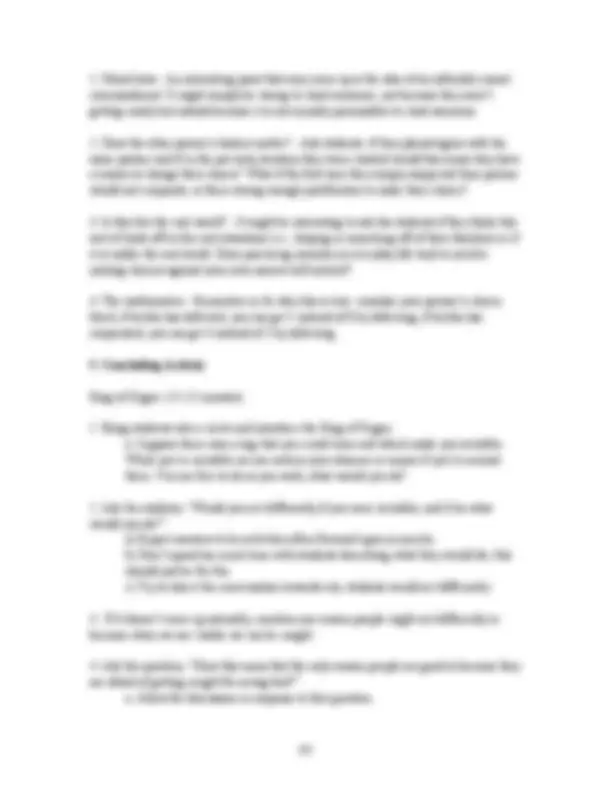
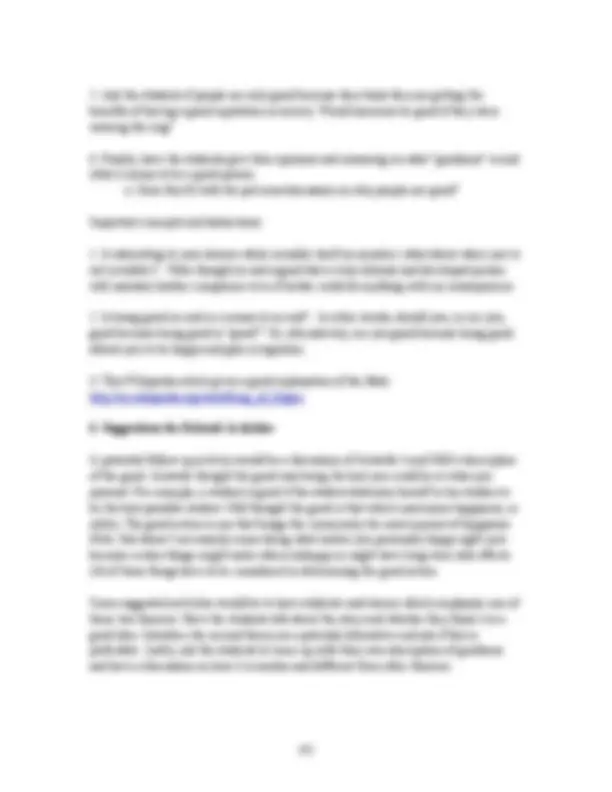
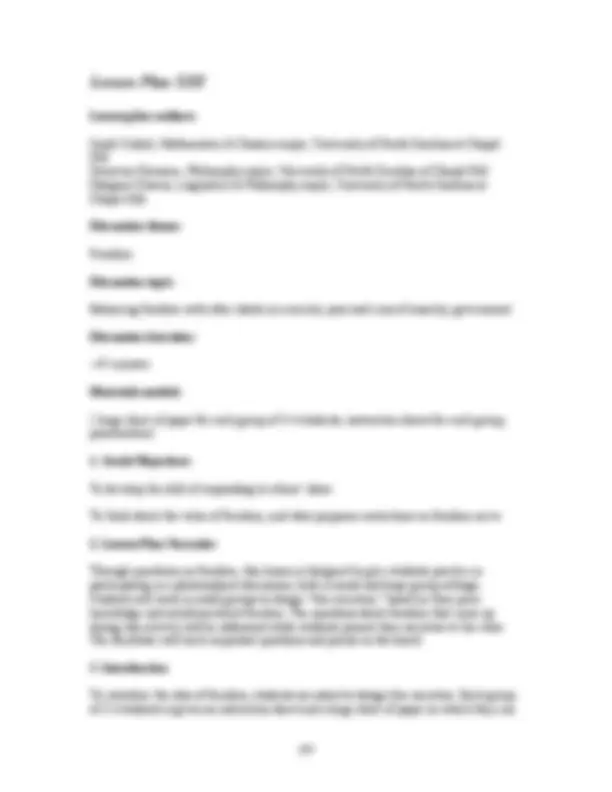
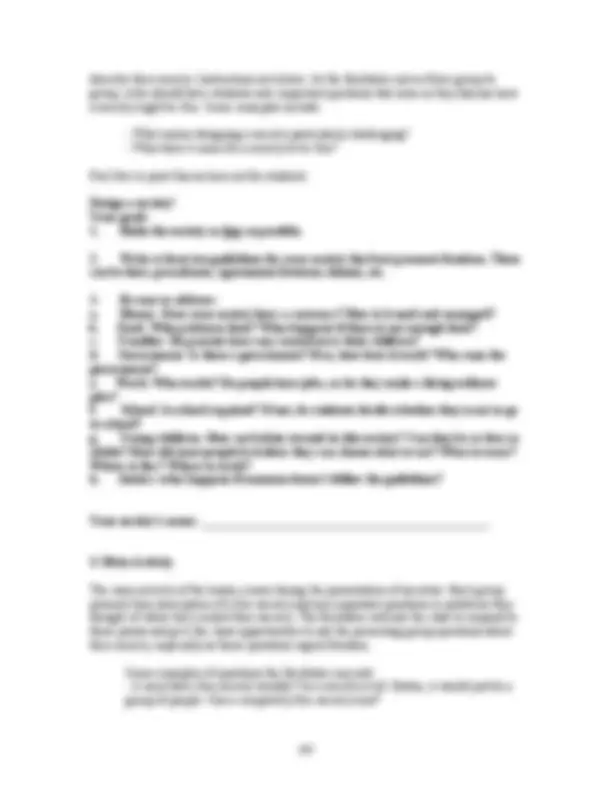
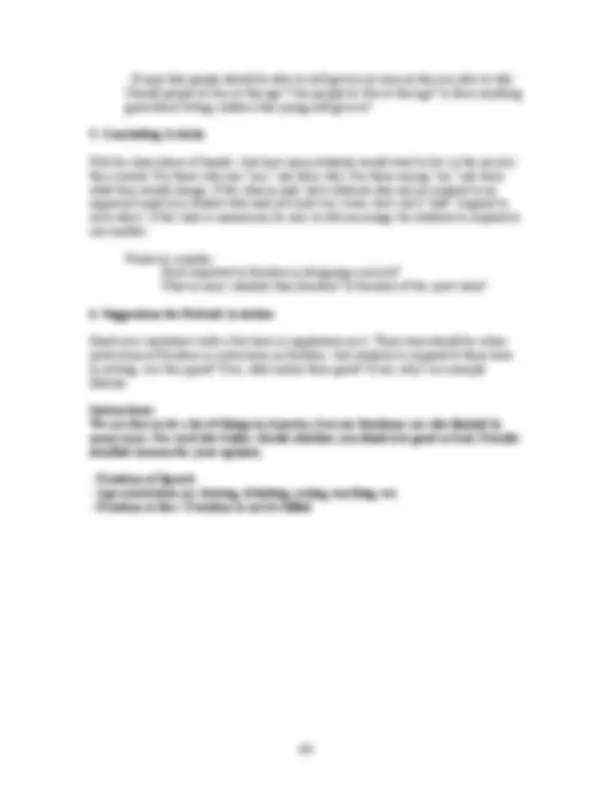
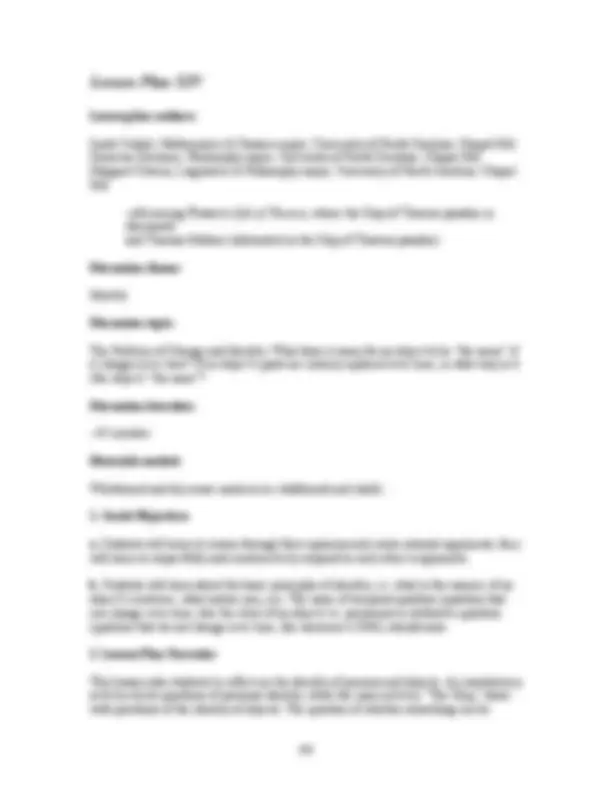
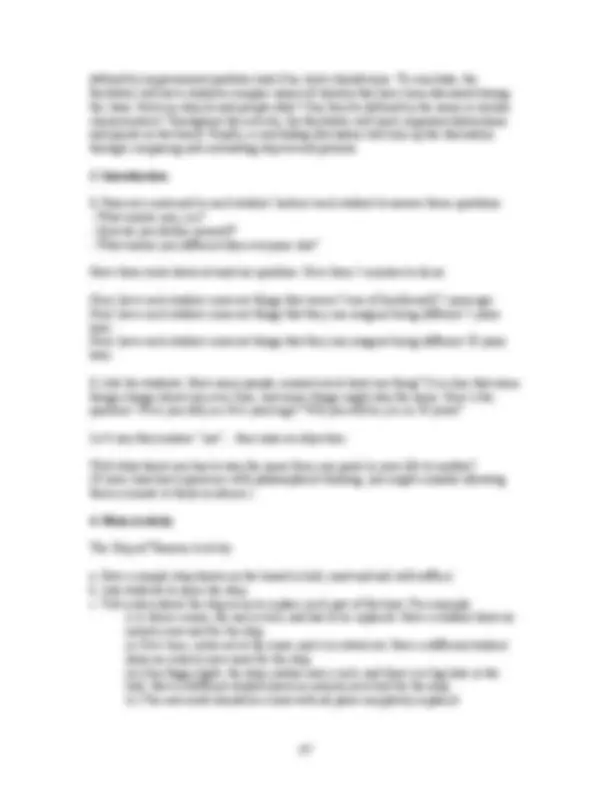
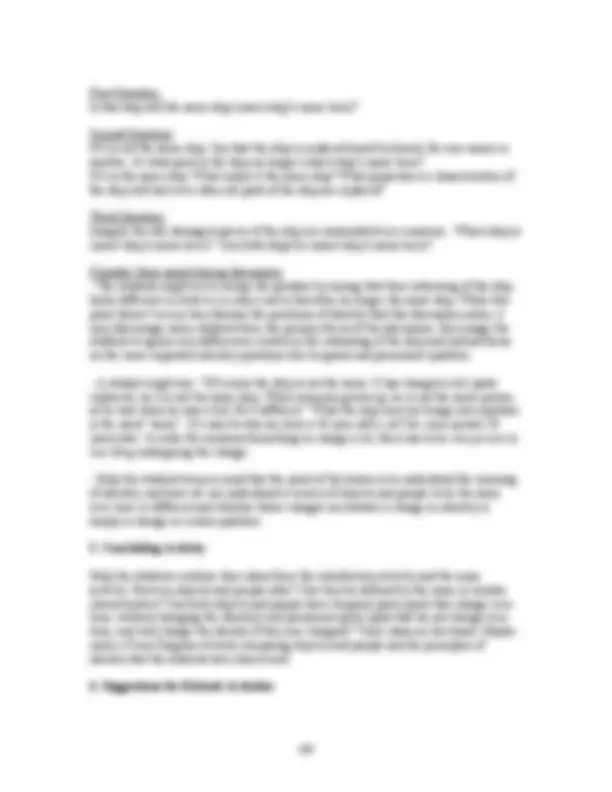
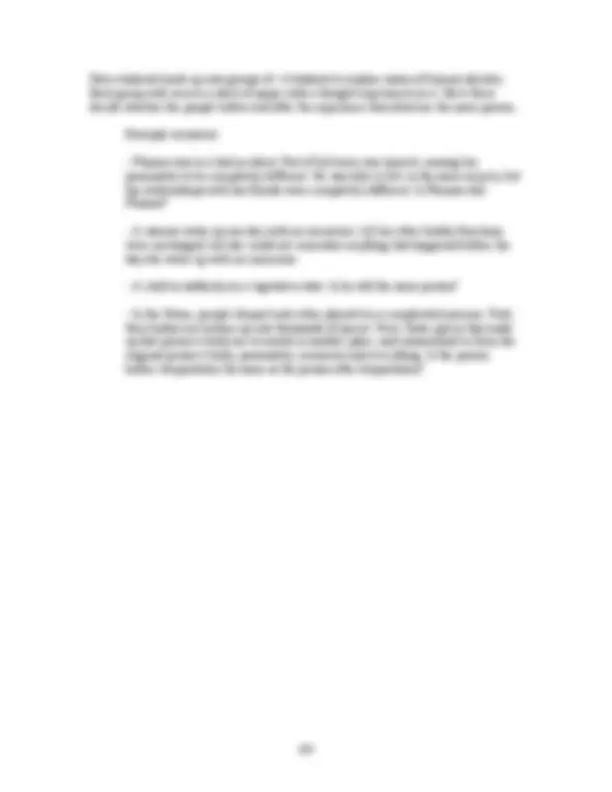
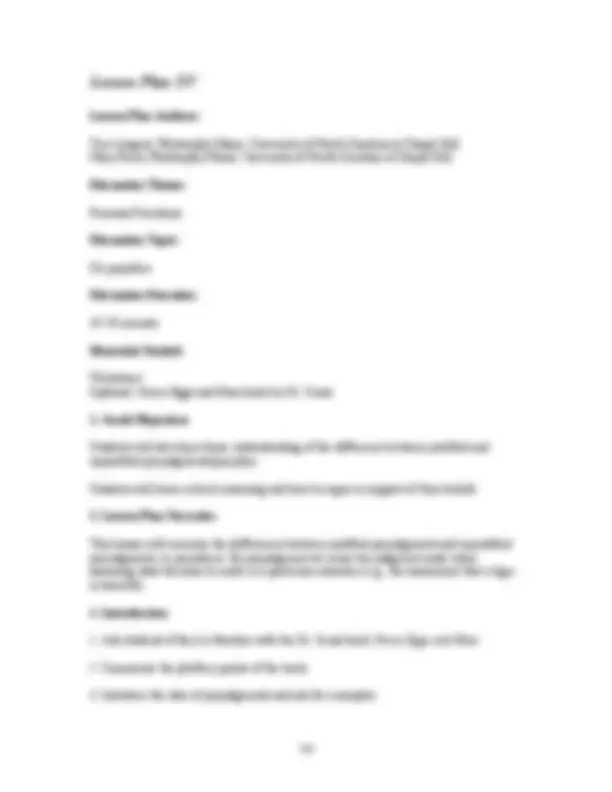
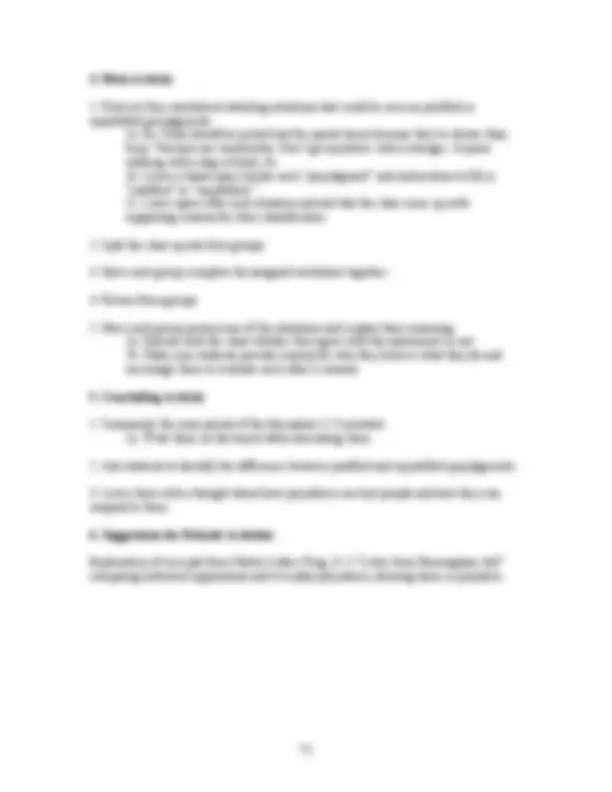
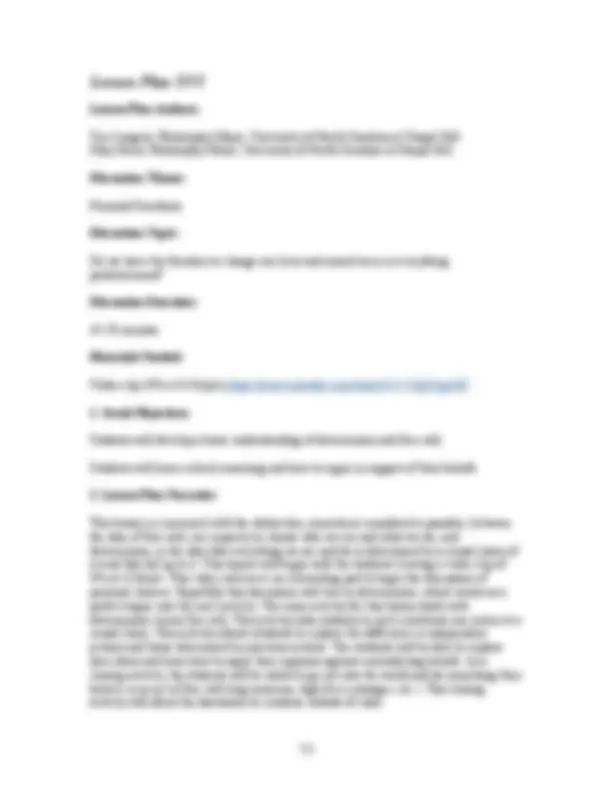
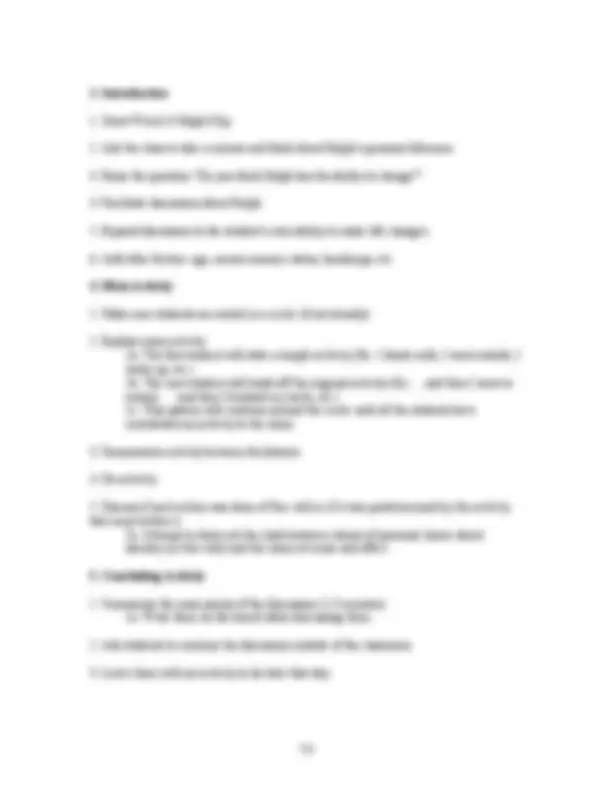



Study with the several resources on Docsity

Earn points by helping other students or get them with a premium plan


Prepare for your exams
Study with the several resources on Docsity

Earn points to download
Earn points by helping other students or get them with a premium plan
Community
Ask the community for help and clear up your study doubts
Discover the best universities in your country according to Docsity users
Free resources
Download our free guides on studying techniques, anxiety management strategies, and thesis advice from Docsity tutors
Lesson plans created by Philosophy 592 (Pre-College Philosophy) Class Members at the University of North Carolina at Chapel Hill in Spring 2013. The lesson plans cover various philosophical topics such as leadership, ethics, justice, freedom, and identity. The document also includes suggestions for related activities and a concluding activity that involves comparing and contrasting different forms of leadership.
Typology: Summaries
1 / 74

This page cannot be seen from the preview
Don't miss anything!



































































a given problem or question. 2b) The primary activity has students distinguish philosophical thought from other modes of thought. For instance, students should note two or more of the following: philosophical inquiry, scientific inquiry, folklore and common wisdom explanations, and indifference. When students have a firm grasp of the distinguishing features of a few of these modes of thought, the instructor should provide a challenge question that forces them to think philosophically. We recommend that you ask them to define a color, such as red. What is the color red? How do you describe the color red? What is it exactly? 2c) The secondary activity aims at explaining the purpose of philosophy. This part of the lesson begins by asking students a simple question: Will you tell us one thing that you once believed but later rejected when you thought deeply about it? (We recommend splitting them into small groups for this.) Students can write these thoughts down on a sheet of paper, or notecard, that the group will later present. After 5 or ten minutes, students should gather into a large group to present their paper. 2d) Finally, end with a closing statement that summarizes a popular explanation of the purpose of philosophy. If time remains, take student questions regarding your closing statement. 2e) In summary, the structure of the lesson is the following: start with the introductory bike example (see below). Spend 10 minutes on this. Next, devote 20 minutes to the primary activity. We recommend spending no more than 10 of these minutes differentiating between the modes of thought, because students usually respond very well to the color question. With the remaining 20 minutes, complete the secondary activity. The closing statement can be brief, so spend a majority of the time in small groups. Give yourself, perhaps, 5 minutes of the 20 to deliver your closing statement.
3. Introduction Bike Example - What should be done? 3a. Present a thought experiment where the facilitator is on a mode of transportation (it can and should be as imaginative as possible) and must hit either 5 young schoolchildren or 1 elderly person. The students should be asked “Which one would you choose?” and they will provide initial responses. These responses should be followed up with “Why?” so that they can begin to provide reasons for their opinions. 4. Main Activity 4a. (20 Minutes): This activity is designed such that students differentiate philosophical thinking from other modes of thinking. The first 10 minutes can be spent distinguishing these modes of thought.
First, ask for students to list different academic disciplines, examples include:
5. Concluding Activity 5a. Now you can facilitate a “silent activity” - one in which the students do not speak. Pass out notecards to the students and have them write a question, their thoughts or concerns, or have them draw a picture to express themselves. After this, the students pass the cards to the left and the other students respond to the original questions, thoughts, concerns or drawings on the other side of card. 5b. We have talked about philosophy. What is philosophy? Why have we bothered with any of this? What use is philosophy? You might not recognize this yet, but since you were babies, adults, television, friends, etc., have been filling your minds with facts and opinions. But do you believe any of these facts and opinions? What is the truth? What ought I accept as true based on the best of my reasoning? Philosophy helps you dissect your world, separating fact from fiction. Philosophy helps you know where to place your faith. In a world that increasingly makes less and less sense as you grow older, this is a rare and valuable gift. Our goal was to introduce you to philosophical thinking by means of popular topics.
6c2. Choose one volunteer. The volunteer will close his/her eyes and the rest of the class will participate in this part of the activity with verbal cues (absolutely no physical guidance), leading the blind student to an object (hidden by the teacher) in the room. Students may call out randomly and without limit. This is meant to be an intentionally confusing experience for the blind student. While giving directions, the class should make mental notes regarding this form of leadership, comparing it with parts A and B. 6d. General Discussion/ Reaction to the Activity. 6d1. Some suggestions for questions to ask the group: What did you think of the first activity? Do you think it was good model for leadership? How did the first activity compare to the second activity? In what ways was it different? In what ways was it similar? Do you think the third activity was an example of good leadership? If not, what qualities made it an example of bad leadership? If so, what qualities made it an example of good leadership? 6d2. The reaction/discussion should center on comparing the different aspects of leadership demonstrated by the activities. Students should discuss commonalities and differences between the activities. How was the preliminary definition of leadership (offered by either students or facilitator) confirmed or rejected by the activities?
Lesson Plan II Lesson plan authors: Andrew Chirdon, Philosophy and Political Science Major, The University of North Carolina at Chapel Hill. Josh Jones, Philosophy and History Major, The University of North Carolina at Chapel Hill. Discussion theme: Leadership Discussion topic: Distinguish the many types of leadership then link these distinctions to a more general conception of leadership. Discussion should focus on different forms and qualities of leadership. Discussion duration: 50 Minutes Materials needed: Two or more volunteers, an object that can be hidden, a whiteboard (or other writing surface), and a dry erase marker.
1. Goals/Objectives (Optional) Students will create a definition based on personal experience that defines a familiar concept – e.g. leadership. Students will dissect a definition into its various aspects, extracting the principles fundamental to the concept. Students will then articulate and defend/support these observations with reasoned argument. Students will be able to identify and talk about the many aspects of leadership – i.e., must leaders guide action directly, what are the differences between leading by example and quiet leadership, what are the differences between voluntary and involuntary leadership, etc.? 2. Lesson Plan Narrative Our goal is for students to begin understanding the concept of leadership. A basic definition of leadership is someone who directly or indirectly guides others through a task
Lesson Plan III Lesson Plan Authors: Joanna Steele, Philosophy Major, University of North Carolina at Chapel Hill Christopher Lambert, Philosophy and History Major, University of North Carolina at Chapel Hill Discussion Theme: Ethics Discussion Topic: What makes an action right or wrong? Discussion Duration: 45 minutes Materials needed: Chalk/Blackboard Two sheets of notebook paper per group
1. Goals/Objectives (1-2) ● Skill objective: Students will learn how to respond to specific points raised by others using logical reasoning. ● Philosophical objective: Students will learn the distinction between deontological and consequentialist ethical theories as demonstrated by the Train Problem. 2. Lesson Plan Narrative The main focus of this lesson is to encourage students to engage in a discussion focusing on what they believe makes an action right or wrong. The first discussion in small groups is designed to encourage students to identify what leads them to classify an action as right or wrong. Once students have stated their ideas about what is right and wrong, begin
■ The students only have two choices- they can allow the train to continue and hit the five people, or they can flip a switch and change the train’s path so that it goes onto the track with the one innocent bystander, hitting the one bystander instead. ● Answers ○ No, I would not flip the switch ■ Students may say that not acting wouldn’t make them a bad person because they didn’t put the people on the track. ■ Students may argue that they could do many things to save the person after they flip the switch. Make it clear that there is no way to save anyone after they flip the switch. ● Large Man-Trolley Problem Dilemma ○ Draw a large man on a piece of paper. The man is standing on a bridge that is over train tracks with five people standing on them. ■ Stipulate that the people on the tracks are innocent bystanders and that the only way to save them is by pushing the equally innocent large man. ■ The same options are available as above: push the man or let the train kill the five people. There are no other options. ● Students may bring up the possibility of asking the man if he would mind being pushed. Try to get them to answer the question under the original stipulations at first, but coming back to the question of consent to be pushed can lead to interesting conversations if time allows for it. ■ Ask the group their thoughts on what should be done. ● Attempt to have discussion on foundational principle behind the choice. ■ Ask group how this relates to the first Trolley Problem. ● Is physically pushing the large man the same as pulling the switch? ○ If yes, why? ○ If no, what is the difference between killing the one man via the switch and pushing the large man? Timeline What do we mean by ethics?- 7 minutes Trolley Problem Dilemma 1- approximately 15 minutes
Large Man-Trolley Problem Dilemma 2- approximately 15 minutes Conclusion of Ethics: approximately 7 minutes
5. Conclusion ● Get the class to explain where they think ethics are derived from (i.e. deontology, virtue ethics, consequentialism, etc). ● Have them write on the back of their index card what influenced their group’s decisions about each scenario: social expectations, personal beliefs, theological beliefs, etc. 6. Suggestion for related activities There are several thought experiments that you can use to discuss ethics. You can expand the discussion to include the scenario of a zombie apocalypse. Set up the scenario that a plague has hit the students’ school, and the only way to stop the plague is to steal 5 magical necklaces from the tombs of five ancient kings. This will allow students the opportunity to discuss whether we have an ethical obligation toward those who have passed away. You may also use a more hands on activity. Pair students into groups of two. Let them know that they have the ability to either cooperate with each other or defect. They cannot inform each other of their respective decisions. Explain that if both students cooperate, they will each get two pieces of candy or stickers. If one person says they will cooperate, but the other defects, then the one who defected will get 3 pieces of candy or stickers. If both defect, then neither participant will receive anything. Once you have explained these rules, have the pairs write their decisions on a piece of paper and hand it to you. Once both students have submitted their answers, reveal what they each decided and ask them why they made their decision. This activity will allow them to discuss the merits of and issues with ethical theories such as virtue ethics and consequentialism.
to help students think about what justice requires, and whether consistency is a requirement of justice. Compared to the other parts of the lesson, this should be relatively brief. The two main activities involve a set of homemade cards that are meant to mimic societies where the nobility control the entirety of the means of production, represented by stickers, and in contrast with that, societies that have undergone a socialist revolution. The two iterations of this game are separated by discussion in order to develop preliminary conceptions of justice, and then move into a comparison. The choice of these two extremes should enable the students to discuss not only the models represented in broad terms, preventing political labels that could hamper discussion, but also discuss middle grounds between the two extremes as a compromise. Ideally, at the end, the students will have some conception of property rights, and any duties that come as a requirement of justice when one holds property. At the end of the lesson, candy or some other reward is given to the class in proportion to how many stickers each individual has. This leads to a concluding discussion on the fairness of this distribution.
3. Introduction ● Hand-thumb game (3 minutes game, 5-7 minutes discussion) ○ Each student is to hold their right hand palm up to their neighbor. With their left hand, they must make a thumbs down into the middle of their neighbor’s hand. ○ On three, go, etc., students must try to catch their neighbor’s thumb as well as try to keep their own thumb from being captured. This will occur simultaneously. ○ Round 1- Whoever can catch their neighbor’s thumb gets a sticker ○ Round 2- Whoever loses gets a sticker ○ Questions for discussion: ■ Is it necessary for the rules to be known beforehand for something to be fair or just? ■ Do the participants have to be a part of making the rules for things to be just? ■ Do you have to have specific qualifications to make just rules? ■ How do you know a rule is just? ■ Does natural talent (or lack thereof) give some individuals the right to have more of a resource than others? 4. Main Activity ● Royal House Sticker Game ○ Make cards: one with a crown and others numbered 1- 5
○ Make cards so that there is one crown for every sixth student in the class ○ Give six (can adjust to the size of the class) stickers to the student with the crown card and tell them to distribute as they see fit ■ Emphasize that they can keep them all for themselves, tear the stickers into pieces, keep all of them, or give one to their best friends, etc. ○ Questions: Was how we distributed the stickers just? ■ Answer: “No” ● Why? ● Is it fair that it comes from an outside authority rather than the people? ■ Answer: “Yes” ● Did the way that the royals distribute the stickers affect the way you viewed this? ○ If yes, would your opinion have changed if you didn’t know how the stickers would be distributed ● Redistributive Sticker Game ○ Use cards made in the “Royal House” game ○ Redistribute the cards randomly. People who got crowns the first time are not guaranteed them this time. ■ This is especially helpful because it brings into the discussion the nature of randomness in birth, the duty of descendants to pay for the wrongs of ancestors, etc. ○ The people with cards numbered “ 1 ” get to take up to two stickers from the people with crowns. ■ The stealing part was the thing that got the entire class the most engaged for us. People are concerned when they feel wronged, and they will gladly explain why they feel that way. ○ Questions for discussion: ■ Was it fair for the people with the 1s to be able to steal the crowns from the royals? ■ Comparing this to real life, do underprivileged people have a right to be taken care of by those who are more fortunate? 5. Concluding Activity ● Ask people to count their stickers ○ Give the individual(s) with the highest sticker amount three pieces of candy
Lesson Plan V Lesson Plan Authors: Rachel Stone, Undergraduate, University of North Carolina at Chapel Hill Christy Lambden, Undergraduate, University of North Carolina at Chapel Hill Discussion Theme: Freedom and Social Contract Theory Discussion Topic: Who can restrict your freedom? Discussion Duration: 47 minutes Materials Needed: 4 x Posters, 4 x Markers, Paper and Pen, sheets with brief explanations of Locke’s political philosophy to pass out to the groups or individuals in the class
1. Goals / Objectives To give students a better understanding of the implications (possible benefits or drawbacks) of freedom through a discussion of John Locke’s conception of freedom and the social contract. Students will learn how to clearly organize and present a philosophical argument. Students will also explore the relationship between theoretical discussion and the practical world. 2. Lesson Plan Narrative To start the lesson have the students write for 5 minutes about a time that they were told what to do. Encourage the students to describe their reactions to being told what to do. When the students have finished allow them to discuss their experiences with a partner before encouraging some to share with the group. Split the class up into 4 groups, each group will look at John Locke’s conception of freedom and the state of nature. Each group will create a visual representation of Locke’s philosophy on a poster board. When they are done, each group should share with the class a concise argument on their philosopher’s view and explain their subsequent visual representation. Have a class discussion on Locke’s philosophy. Move into a discussion about the government
restricting citizens’ freedom, and whether the government should ever be able to restrict its people’s freedom and why.
3. Introduction In addition to introducing the subject, this initial activity should cause the students to reflect upon who restricts their freedom and should show them that there are many different authorities that they listen to. The class should think about the benefits to society and individuals of giving up freedom. Is it always a bad thing? Why or why not? Encourage the class to consider that society/the government may curtail individual freedom in some cases to promote the greater freedom of a society. This will help them consider whether or not valuing the individual over the group or the group over the individual is just. The introductory activity should take 5-7 minutes. The steps outlined below should help to achieve these goals. 1. Introduce the discussion topic by asking the class to share examples of a time their freedom was restricted. These examples may touch on their relationship to: - rules of an institution - religion - parental guidance - teachers - peers If they don’t talk about all the different ways/people who can restrict their freedom, provide examples for the class. 2. Ask the students to turn to their neighbor and discuss a time that their freedom was restricted by one of these authorities. Ask them to talk about why they listened to the authority and did not go against them. 3. Ask for a couple of volunteers to share their stories with the class. Discuss the stories with the class and try to finish this activity on a discussion of whether giving up individual freedom is useful for society. 4. Main Activity The main activity should introduce the class to some of the philosophical ideas of John Locke. It should also give them the ability to construct and represent a philosophical argument. Overall the activity should introduce the idea that in certain circumstances it is beneficial for our freedom to be curtailed. It is not necessary for students to agree with this but they should understand that some people believe that it is. Help to provide examples in our society when it might be beneficial (i.e., we can’t just steal something from another person even if we want it). The Main Activity should run for a total of 30 minutes. The steps below should help take the discussion in this direction.